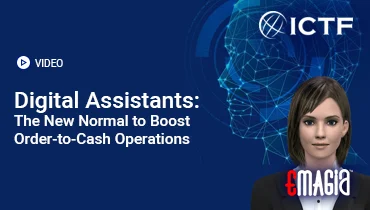Introduction
In the realm of finance and business operations, the term “Outstanding” holds significant importance. It refers to obligations or tasks that are pending completion or payment. This comprehensive guide delves into the various facets of outstanding balances and invoices, their implications, and strategies for effective management.
What Does “Outstanding” Mean in Finance?
In financial terminology, “Outstanding” refers to amounts that are due for payment but have not yet been settled. This can encompass:
- Outstanding Invoices: Bills issued to clients that remain unpaid.
- Outstanding Balances: The remaining amount owed on a loan or credit account.
- Outstanding Tasks: Financial tasks or obligations pending completion.
Understanding and monitoring outstanding items is crucial for maintaining healthy cash flow and financial stability.
Understanding Outstanding Invoices
An Outstanding Invoice is a bill that has been sent to a client but has not yet been paid. It’s essential to differentiate between:
- Current Outstanding Invoices: Within the agreed payment period.
- Overdue Invoices: Past the due date and require immediate attention.
Timely follow-ups and clear communication can aid in prompt payments and reduce the risk of bad debts.
Outstanding Balances: Definition and Impact
An Outstanding Balance refers to the total amount owed on a financial obligation, such as a loan or credit account. Key aspects include:
- Principal Amount: The original sum borrowed or owed.
- Interest and Fees: Additional charges accrued over time.
High outstanding balances can affect credit scores and limit borrowing capacity, emphasizing the need for regular payments and financial planning.
Causes of Outstanding Invoices and Balances
Several factors contribute to the accumulation of outstanding amounts:
- Incomplete or Incorrect Information: Errors in invoices can delay payments.
- Technical Issues: System glitches may hinder transaction processing.
- Client Negligence: Forgetfulness or intentional delays by clients.
- Cash Flow Constraints: Clients facing financial difficulties may postpone payments.
Identifying these causes allows businesses to implement preventive measures and streamline payment processes.
Consequences of Unmanaged Outstanding Amounts
Neglecting outstanding invoices and balances can lead to:
- Cash Flow Disruptions: Affecting the ability to meet operational expenses.
- Increased Financial Costs: Incurring interest or penalties on unpaid amounts.
- Strained Business Relationships: Late payments can damage trust with suppliers and clients.
- Credit Score Impacts: Persistent outstanding debts can lower credit ratings.
Proactive management is essential to mitigate these risks and ensure financial health.
Strategies to Manage and Reduce Outstanding Balances
Effective approaches include:
- Automated Invoicing Systems: Ensuring timely and accurate billing.
- Clear Payment Terms: Setting expectations for payment timelines and penalties.
- Regular Follow-Ups: Prompt reminders to clients about due payments.
- Flexible Payment Options: Offering various methods to facilitate ease of payment.
Implementing these strategies can enhance cash flow and reduce the incidence of outstanding amounts.
Legal Framework Surrounding Outstanding Payments
Understanding legal protections is vital:
- Contractual Agreements: Clearly defined terms can provide legal recourse in case of non-payment.
- Interest on Late Payments: Laws may permit charging interest on overdue amounts.
- Debt Recovery Procedures: Legal avenues exist to recover unpaid debts, including court actions or engaging collection agencies.
Familiarity with these frameworks ensures businesses can enforce payment obligations effectively.
Smart Solutions for Outstanding Management with Emagia
Emagia offers advanced solutions to streamline the management of outstanding balances:
- AI-Powered Automation: Automates invoice processing, follow-ups, and reconciliation.
- Predictive Analytics: Forecasts payment behaviors and identifies high-risk accounts.
- Integrated Dashboards: Provides real-time visibility into outstanding amounts.
- Seamless Integration: Connects with ERP and accounting systems for smooth operations.
With Emagia, businesses can accelerate collections, reduce DSO (Days Sales Outstanding), and enhance customer satisfaction.
Frequently Asked Questions (FAQs)
What is the meaning of outstanding in accounting?
Outstanding in accounting refers to amounts that are due but have not yet been paid, such as unpaid invoices or loan balances.
How can I manage outstanding invoices effectively?
Use automated invoicing systems, clear payment terms, regular follow-ups, and flexible payment methods to manage outstanding invoices.
What is an outstanding balance example?
If a customer owes $1,000 on a loan and has paid $400, the outstanding balance is $600.
How does outstanding affect my credit?
High or overdue outstanding balances can lower your credit score and affect borrowing ability.
Is there a legal way to charge for outstanding payments?
Yes, businesses can include interest clauses in contracts and pursue legal recovery if payments are overdue.
By understanding and actively managing outstanding balances and invoices, businesses can ensure better financial control, customer relationships, and operational efficiency.



